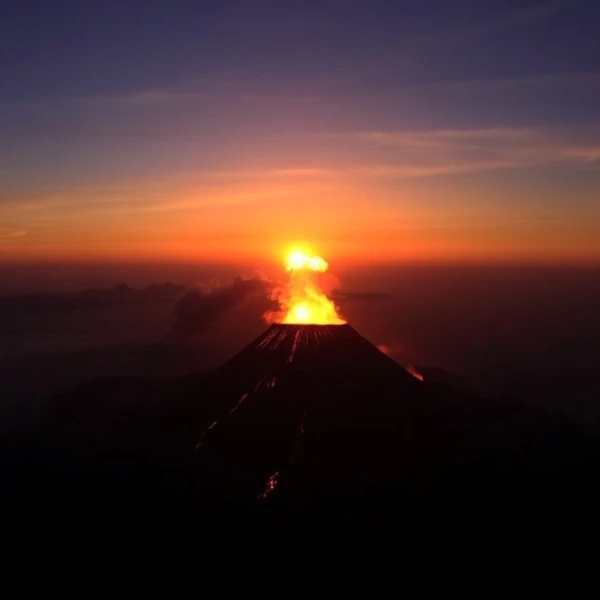
Indonesia and New Zealand are part of the Pacific Ring of Fire, where the subduction of oceanic plates causes explosive gray volcanoes. Merapi, Agung, and Ruapehu are stratovolcanoes with significant explosive activity, generating pyroclastic flows, lahars, and ash plumes.
Some Oceanic volcanoes produce fluid basaltic lava flows, such as Yasur in Vanuatu or Krakatoa in Indonesia during effusive phases. These red volcanoes shape spectacular landscapes, such as shield volcanoes or low-slope cones.
In addition to explosive eruptions, Oceanic volcanoes cause local tsunamis (e.g., Krakatoa 1883), lahars, and crop destruction. Populations are particularly exposed on densely populated and volcanically active islands.
| Volcano | Color | Location | Altitude (m) | Type | Last Eruption | Comment | Status |
|---|---|---|---|---|---|---|---|
| Merapi | Gray | Indonesia, Java | 2911 | Stratovolcano | 2023 | Frequent eruptions, regular pyroclastic flows. | Active |
| Agung | Gray | Indonesia, Bali | 3031 | Stratovolcano | 2019 | Explosive volcano, threat to local population and tourism. | Active |
| Ruapehu | Gray | New Zealand | 2797 | Stratovolcano | 2007 | Explosive volcano with acidic crater lake, frequent lahars. | Active |
| Krakatoa | Red | Indonesia, Sunda | 813 | Composite volcano / cone | 2018–2019 | Shield and explosive volcano, major historical eruptions. | Active |
| Yasur | Red | Vanuatu | 361 | Shield volcano | Ongoing | Fluid lava, almost continuous eruptions, tourist attraction. | Active |
| Rinjani | Gray | Indonesia, Lombok | 3726 | Stratovolcano | 2016 (last minor activity) | Volcanic summit with caldera lake, recent moderate eruption. | Dormant |
| Ol Doinyo Lengaï (Oceania extension) | Red | Papua New Guinea | 2960 | Stratovolcano | 2017–2024 | Carbonatite volcano, recurrent but moderate eruptions. | Dormant |
Red volcanoes have fluid basaltic lava flows, such as Yasur or Krakatoa during effusive phases, with spectacular but moderate activity.
Gray volcanoes are explosive, rich in silica and dissolved gases, such as Merapi, Agung, or Ruapehu, generating ash plumes, pyroclastic flows, and lahars.
| Characteristic | Red Volcanoes | Gray Volcanoes |
|---|---|---|
| Magma Type | Basaltic, low in silica (< 52 % SiO2) | Andesitic to rhyolitic, rich in silica (> 55 % SiO2) |
| Viscosity | Low \(\eta \sim 10^{1-3}\, \text{Pa·s}\) | High \(\eta \sim 10^{5-9}\, \text{Pa·s}\) |
| Eruptive Style | Effusive: fluid lava flows | Explosive: ash plumes, pyroclastic flows |
| Visible Manifestations | Red lava, extensive lava fields | Gray ash layers, steep stratovolcanoes |
| Main Risks | Slow but destructive lava flows | Pyroclastic flows, sudden explosions, lahars |
| Oceanic Examples | Yasur (Vanuatu), Krakatoa (Indonesia) | Merapi (Indonesia), Agung (Indonesia), Ruapehu (NZ) |